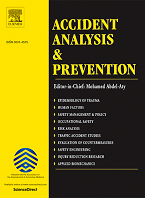Are Latin American cycling commuters “at risk”? A comparative study on cycling patterns, behaviors, and crashes with non-commuter cyclists
- Autors: Sergio Useche, Cristina Esteban, Francisco Alonso, Luis Montoro (2020).
- Tipus de publicació: Article
- URL Publicacio: Are Latin American cycling commuters “at risk”? A comparative study on cycling patterns, behaviors, and crashes with non-commuter cyclists
- Titol publicació (nom del llibre o de la revista): Accident Analysis and Prevention. Num.150:105915
-
Resum:
Introduction As part of the transformation of urban transportation dynamics, commuter cycling has acquired a high relevance as an alternative mode of transport in different countries, and Latin America seems to be one of the main focus of this worldwide “revolution”. However, the high rates of crashes and injuries suffered by commuters have become a relevant issue in the field of road safety, especially in emerging regions with low cycling tradition, where social and infrastructural gaps may endanger the cyclists’ safety. Objectives This study had two objectives. First, to compare key safe cycling-related variables between cycling commuters and non-commuters; and second, to differentially asses the effect of individual and cycling-related variables on their self-reported crash rates. Method: For this cross-sectional research, the data provided by 577 Latin American urban cyclists from three countries (Argentina, Colombia and Mexico) with a mean age of 32.7 years was used. They answered a questionnaire on cycling habits, risk perception, rule knowledge, cycling behaviors and riding crashes. Results The outcomes of this study showed that, despite having a higher risk perception, cycling commuters perform deliberate risky cycling behaviors (traffic violations) more frequently, and they suffer more crashes; cycling commuters report higher rates of psychological distress, and a lower degree of rule knowledge and protective behaviors than non-commuters. Furthermore, structural similarities and differences in the explanation of cycling crashes were found across commuters and non-commuters. Conclusion The results of this study suggest that non-commuters, whose purposes for cycling are more aimed at leisure and occasional trips, perform less risky behaviors but suffer more cycling distractions, whereas commuters are comparatively more exposed to behavioral-based safety risks, and suffer more frequent crashes. Since recent evidence forecasts that urban cycling will keep growing in Latin American cities, it is necessary to implement policies and educational/training improvements that may enhance the safety and health of cyclists in these countries.
DOI: 10.1016/j.aap.2020.105915ISSN: 0001-4575










